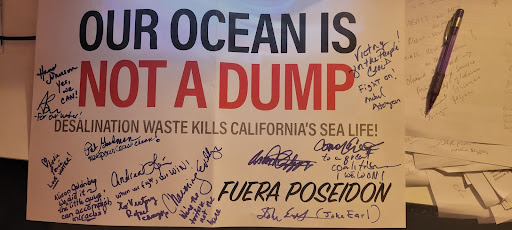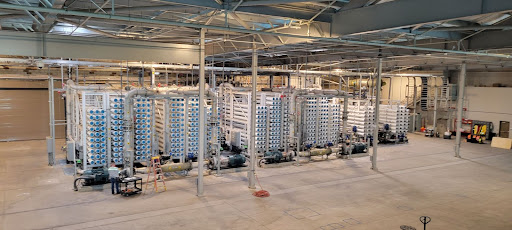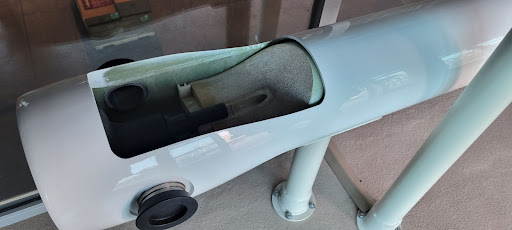By Charming Evelyn
Chair – Water Committee, Sierra Club Angeles Chapter
You are probably unaware that there are two types of desalination – brackish and ocean. Of course the one everyone is usually referring to is ocean desalination.

An acquaintance of mine recently asked: “Why doesn’t every government just build desalination plants all over the world just like refineries?” I wanted to rattle off a list of pros and cons, but since we were conversing via text, I simply replied: “We can have a long discussion about that…but to keep it simple..destroys marine life and phytoplankton, the building blocks of our food chain.” Probably not as simple an answer as I thought, but it did inspire me to write this story.
Sierra Club has a very comprehensive desalination policy, which can be boiled down to: “First do no harm.” The scope of the guidelines start off with: “The guidelines are intended to provide a basis by which to address the environmental issues associated with the desalination of seawater, brackish groundwater, brackish surface waters, and recycling municipal wastewater”. You’re probably wondering why mention so many water processes – it may interest you to know that the same technology is used for all of the above mentioned processes, namely reverse osmosis, micro filtration and UV light.
We all know that reverse osmosis is energy intensive, however with ocean desalination the energy needed to process ocean water is 3-10 times more than recycled water. This is because of the salt and other mineral content in ocean water. This energy use, plus the energy it takes to transport the water for processing and distribution contributes to the very high cost of said water and greenhouse gasses.

Desalination plant
Another issue with ocean desalination is the waste byproduct created after the process which is called brine. It is hypersaline and contains other additives and other compounds that are too large to pass through the membranes used in the reverse osmosis process. It is disposed of in the ocean where it unfortunately alters the chemistry of the water where it is dispersed leading to what is referred to as dead zones. These are areas within the ocean that are depleted of oxygen, leading to massive fish die-offs including affecting the benthic population of the seafloor.

Cross section of a microfiltration chamber used in reverse osmosis
Open intake pipes are another area where marine mortality occurs. The preferred alternative is subsurface intake, however it is more expensive. 1 mm wedge wire screens are typically used with the open intake pipes, yet even at that size larvae and phytoplankton are impinged and killed. Subsurface intakes, intake water from below the ocean floor and are usually situated closer to shore and are used in smaller producing facilities. Of course location plays a very large role.
The siting of ocean desalination facilities is extremely important, tsunami zones, sea level rise and earthquake faults all play a role, so does the proximity of any groundwater aquifers. Leakage from the pipes of an ocean desalination facility whether carrying brine or untreated sea water can percolate into the ground and into an aquifer causing contamination of said aquifer.
Last but not least is the cost to the consumer. Costs are always passed on to the ratepayer. If you’re a homeowner then you can control your costs up to a certain point, by decreasing your water use and investing in water and energy efficient devices. However, if you’re a renter, that cost is passed on to you in a not so equitable fashion. Your rent may increase by $50-$100 per month, you have no control. Who benefits and who pays? Typically the beneficiaries are those living closest to the facility as transportation of water is costly, however, everyone pays, including our aquatic friends and wildlife who depend on a healthy ocean to exist.
Charming Evelyn is the Chair of the Angeles Chapter Water Committee and Co Chair of the Sierra Club California Water Committee
